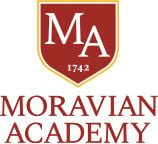From Imagination to Innovation: A STEAM Spotlight
Imagination leads to innovation at Moravian Academy. Every day, students engineer, code, build, and design robots and other complex, hands-on projects. This week, we shine the spotlight on a few of our STEAM programs and the faculty who inspire curious learners to become confident in their capabilities.
Jump to: Swain's Engineering & Design | Downtown's Robotics Elective | Merle-Smith's Robotics Team
Swain Campus Engineering and Design
By Mr. Adrian Sauers
The Imaginate Center, the makerspace at Swain, has been a place of learning, growing, and celebrating everything STEAM for the past eight years. Emphasis on creativity, fun, teamwork and real-world application are the unifying themes of our projects. My goal as an educator is to have my students graduate from their 8th-grade year at our campus and continue in STEAM-related courses, clubs, and professions with appreciation, confidence, and curiosity.
Examples of our students' work include; go-karts, sleds, gliders, LED paper sculptures/circuits, CAD-created hardware, and furniture. These creations require all the subjects that make up STEAM (Science, Technology, Engineering, Art, and Mathematics) and also draw from other subjects for reinforcement and collaboration between students and teachers. Giving our students multiple “tools” to use adds to the list of possible paths that can be taken.
-1.jpeg?width=1200&height=900&name=image000000%20(1)-1.jpeg)
The inclusion of the “A” in STEM is also something I believe completes the idea of what it really means to be an effective designer or engineer. Art, or the idea of making something unique or visually interesting, is vital when it comes to creating or improving something. I’ve found that students who are encouraged to “lean” into their artistic sensibilities generally see beyond pure function and think about how their project works in our complex world.
Additionally, the diversity of our students translates to a diversity of ideas. Seeing problems or challenges through different lenses makes for exciting revelations. My classroom is a safe place for my students to be themselves and my background in art has made me acutely aware of the importance of representation, inclusion, and breaking engineering stereotypes. When classmates have different backgrounds, attitudes, and family structures, our makerspace creates a view into the future of professional life.
 Beyond the fun and intellectual gymnastics, our makerspace curriculum supports our students’ understanding and ability to feel comfortable using tools and materials. I’ve been told multiple times by parents that their children have impressed them by their “handiness”. Learning how to measure, cut, connect, or manipulate digital and physical media aren’t just “extras” or “specials,” they are essential skills for a developing mind. We need to continue driving the importance of hands-on learning. It is my hope to inspire everyone who walks through my door to get excited by the possibilities of their minds, tools, and fellow humans for the purpose of doing good in the world.
Beyond the fun and intellectual gymnastics, our makerspace curriculum supports our students’ understanding and ability to feel comfortable using tools and materials. I’ve been told multiple times by parents that their children have impressed them by their “handiness”. Learning how to measure, cut, connect, or manipulate digital and physical media aren’t just “extras” or “specials,” they are essential skills for a developing mind. We need to continue driving the importance of hands-on learning. It is my hope to inspire everyone who walks through my door to get excited by the possibilities of their minds, tools, and fellow humans for the purpose of doing good in the world.
The Downtown Campus Robotics Elective
By Mrs. JoAnne Daniels
The Downtown Campus Middle School has a robust electives program. Among the many electives offered to all middle school students is the popular semester-long ‘Introduction to EV3 Robotics’ which meets on Tuesdays during the morning community block. Robotics is offered once each semester.
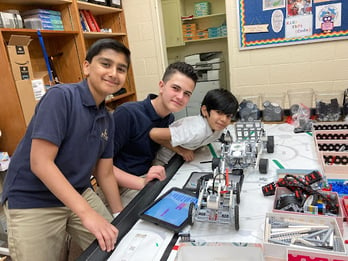 Based on the Lego Mindstorms platform, students build and code moving robots using Technic pieces, motors and sensors. Initially, students begin with guided design and task instruction. Then, they move on to personal and ‘free-build’ designs along with creative and complex robot tasks, They use the engineering process along the way from prototype through final design; coding is Scratch language-based, so students become comfortable and efficient in this area as well.
Based on the Lego Mindstorms platform, students build and code moving robots using Technic pieces, motors and sensors. Initially, students begin with guided design and task instruction. Then, they move on to personal and ‘free-build’ designs along with creative and complex robot tasks, They use the engineering process along the way from prototype through final design; coding is Scratch language-based, so students become comfortable and efficient in this area as well.
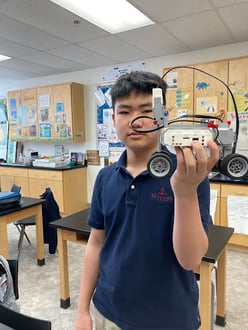 By the end of the semester, students in the robotics elective have been introduced to motors and sensors, the design process and graphics-based coding. Students may repeat this elective in subsequent semesters to build on their robotics design and coding foundations. Having had initial exposure to robotics in this elective in middle school, many students have successfully transitioned to the Merle-Smith Campus’ competitive FIRST robotics team.
By the end of the semester, students in the robotics elective have been introduced to motors and sensors, the design process and graphics-based coding. Students may repeat this elective in subsequent semesters to build on their robotics design and coding foundations. Having had initial exposure to robotics in this elective in middle school, many students have successfully transitioned to the Merle-Smith Campus’ competitive FIRST robotics team.
Merle-Smith Campus Robotics Team: "The Dark Byte"
By Dr. Jeff Lawlis and Ms. Lara Cesco-Cancian
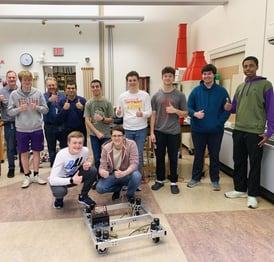 At the Merle-Smith Campus, students have been participating in the First Robotics Competition (FRC) for nine years. Known as “The Dark Byte,” FRC Team 5490 has been designing and building robots since 2015, with the help of parents and STEM professionals who act as mentors for the program. Students learn valuable STEM skills such as computer aided drafting using Fusion 360, crimping and soldering connections, mapping out the electrical system, machining aluminum channel using a Precision Mathews mill, and using hand tools to assemble the robot. Competition season lasts from the beginning of January to the beginning of April, requiring students to put in long hours to build an entire robot in under three months. Robots have a maximum perimeter of 120 inches and a weight of up to 125 pounds using a combination of motors, gears and metal supports.
At the Merle-Smith Campus, students have been participating in the First Robotics Competition (FRC) for nine years. Known as “The Dark Byte,” FRC Team 5490 has been designing and building robots since 2015, with the help of parents and STEM professionals who act as mentors for the program. Students learn valuable STEM skills such as computer aided drafting using Fusion 360, crimping and soldering connections, mapping out the electrical system, machining aluminum channel using a Precision Mathews mill, and using hand tools to assemble the robot. Competition season lasts from the beginning of January to the beginning of April, requiring students to put in long hours to build an entire robot in under three months. Robots have a maximum perimeter of 120 inches and a weight of up to 125 pounds using a combination of motors, gears and metal supports.
The mission of FIRST® is to “inspire young people to be science and technology leaders and innovators, by engaging them in exciting mentor-based programs that build science, engineering, and technology skills, that inspire innovation, and that foster well-rounded life capabilities including self-confidence, communication, and leadership.” The FRC competition involves navigating a robot across a 27 ft. x 54 ft. playing field, using an Xbox controller that is attached to a wireless network. The goal of the competition is to score as many points as possible for your alliance, which is pitted against an opposing alliance with three different robots. The game changes every year, requiring teams to design a new robot every year to shoot balls, pick up cones or cubes, use machine learning to assist in autonomous navigation, or climb a set of rungs and bars. Students love the challenge of designing robotic mechanisms, working with students from other schools in the alliance, and navigating the robot on the field in a pressure-packed timed event.
 This year, our robotics team implemented a new swerve drive chassis that is capable of side-to-side motion, as well as designing an arm with a shoulder joint, elbow joint and gripper to pick up cones and place them on poles to score points. Patrick Johnson, a senior, was our lead programmer and Ethan Krupka, also a senior, was the robot driver. We would like to give thanks to Chelsea Maund, Alizeh Ali, Hal Skinner, Qayn Jaffer, Maisum Walli, Kaveh Fayyazi, Jake Dubow, Caleb Greene, and Talia Fantozzi, who attended one or more of the FRC competitions and were vital to the success of the team!
This year, our robotics team implemented a new swerve drive chassis that is capable of side-to-side motion, as well as designing an arm with a shoulder joint, elbow joint and gripper to pick up cones and place them on poles to score points. Patrick Johnson, a senior, was our lead programmer and Ethan Krupka, also a senior, was the robot driver. We would like to give thanks to Chelsea Maund, Alizeh Ali, Hal Skinner, Qayn Jaffer, Maisum Walli, Kaveh Fayyazi, Jake Dubow, Caleb Greene, and Talia Fantozzi, who attended one or more of the FRC competitions and were vital to the success of the team!
Team Instagram: @frc_team5490


 myMA
myMA




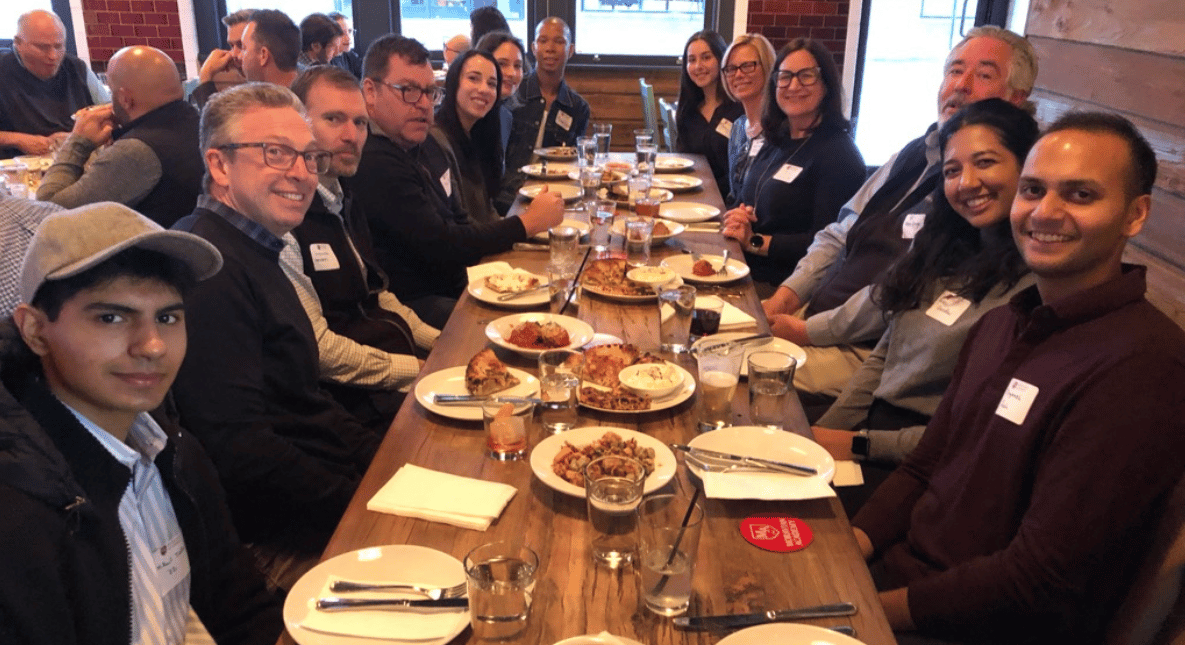
.png)
